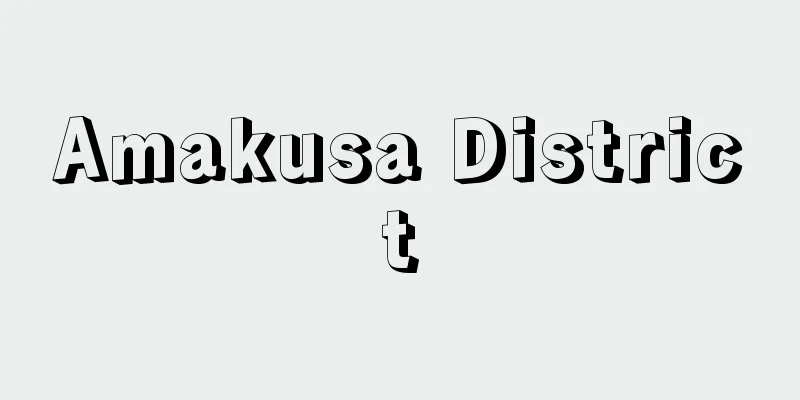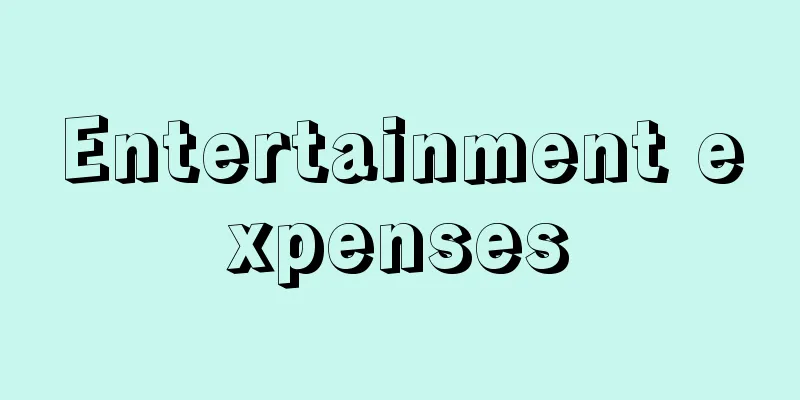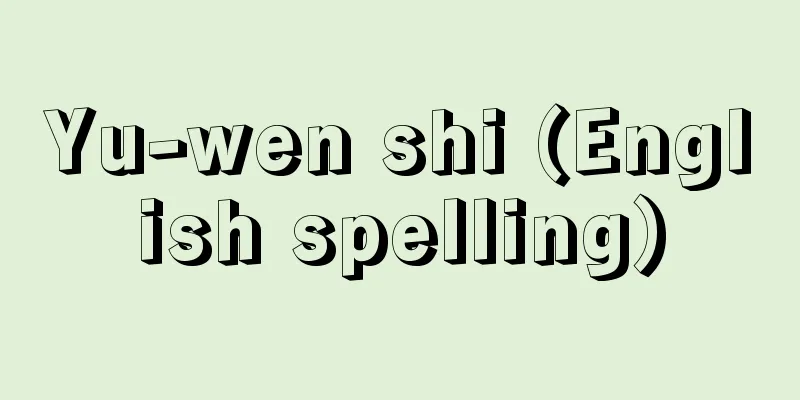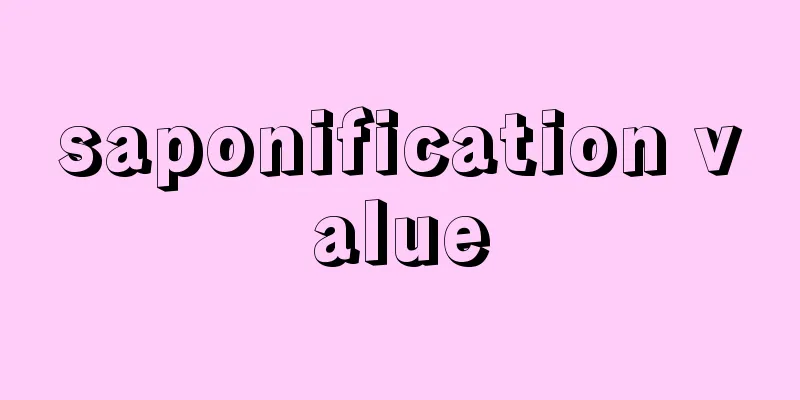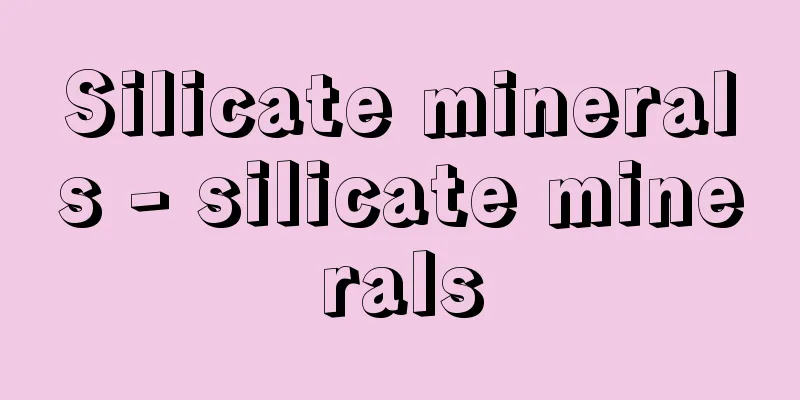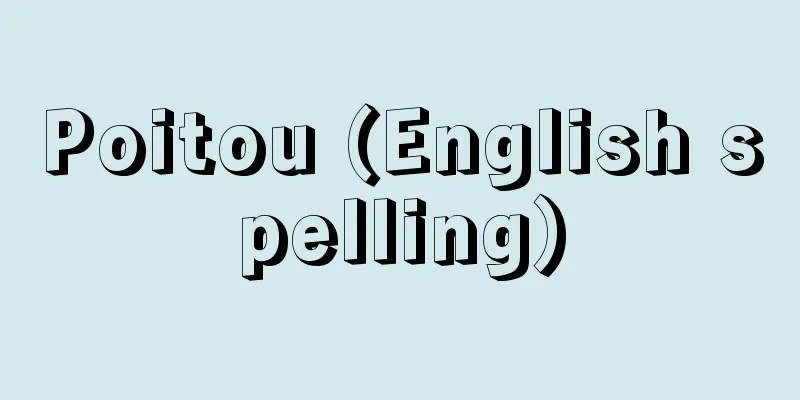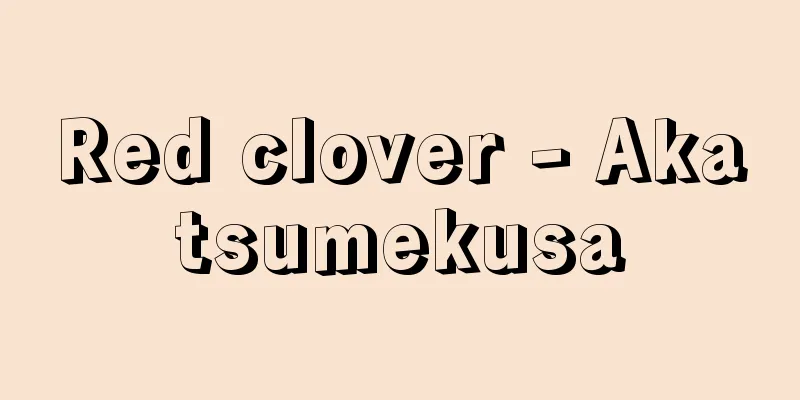Hay Fever

|
What kind of disease is it? ●Main symptoms and course This is a disease in which an allergic reaction to pollen causes an inflammatory reaction in the nasal mucosa and conjunctiva of the eyes. The main symptoms are nasal symptoms such as sneezing, runny nose, and nasal congestion (allergic rhinitis), and eye symptoms such as itchy and tearing eyes (allergic conjunctivitis). The sensory nerves of the nasal mucosa and conjunctiva of the eyes reach the cerebrum through the same route as the sensory nerves from the pharynx and ear mucosa, so when the amount of pollen in the air is at its peak, not only nasal and eye symptoms but also itching of the soft palate at the back of the mouth and even ears can occur. Symptoms do not occur when pollen, which is an allergen (antigen, causative substance), is not in the air. A disease that has similar symptoms regardless of the season is perennial allergic rhinitis, and its allergens are dust mites, house dust, pet hair, dandruff, etc. ● How the symptoms and causes of the disease develop Hay fever is an excessive immune response that tries to eliminate pollen, a foreign substance, from the body. There are many types of plants that are allergens, but in Japan, it is most often caused by cedar pollen, which is dispersed from February to April. Other allergens include cypress, orchard grass in early summer, timothy grass in autumn, and mugwort. In Hokkaido, there are few cedars, but white birch is more prevalent. ●Characteristics of the disease The number of patients varies depending on which plant the pollen comes from, as well as when and how much is released. Therefore, the number and percentage of people suffering from this disease varies greatly from country to country. It is estimated that approximately 15.6 percent of the total population in Japan currently suffers from this disease. (1) It is thought that factors such as cedar forests, which account for 18 percent of forests nationwide, are increasing the amount of cedar pollen, the most common allergen, released into the air, as well as air pollution in urban areas, are contributing to the cause. EBM checks on common treatments and care [Treatment and care] Avoid antigens [Rating] ☆☆ [Evaluation points] There has been a clinical study on antigen avoidance for perennial allergic rhinitis, which is caused by the same mechanism as hay fever. Allergens for allergic rhinitis include household dust and pet hair. When comparing cases where mites, one of the allergens, were used with cases where they were not, it was shown that symptoms improved more when miticides were used. Considering that the disease is caused by an immune response to foreign substances, avoiding antigens is considered to be the basis of treatment for hay fever as well. (2) [Treatment and care] Use nasal steroid sprays for nasal symptoms [Rating] ☆☆☆☆ [Evaluation Points] For nasal symptoms such as stuffy nose and runny nose, nasal drops containing adrenal corticosteroids are said to be more effective than oral medications. (3)(4) [Treatment and care] Take antihistamines [Rating] ☆☆☆ [Evaluation Points] Antihistamines are effective against itching, runny nose, and sneezing. They are divided into first-generation and second-generation. First-generation antihistamines have a strong sedative effect and can cause side effects such as drowsiness. Caution is required when operating a car or machinery. On the other hand, second-generation antihistamines have less sedative effect and are now commonly used. (5) [Treatment and care] Use antihistamine nasal spray [Rating] ☆☆ [Evaluation points] Antihistamine nasal sprays have a faster effect than steroid nasal sprays. (6) [Treatment and care] Use eye drops for eye symptoms [Rating] ☆☆ [Evaluation points] Oral anti-allergy medication is effective for eye symptoms, but when oral medication alone is ineffective, experts recommend using anti-allergy eye drops as an adjunct. [Treatment and care] Immunotherapy is performed to weaken the reaction to pollen (antigens). [Evaluation] ☆☆ [Evaluation points] Immunotherapy is a treatment in which the causative antigen is absorbed into the body in small, gradually increasing amounts, and it has been suggested that it may reduce the symptoms of hay fever. (7) There are two types of immunotherapy: subcutaneous immunotherapy (administering antigens by injection) and sublingual immunotherapy (administering antigens by taking medicine). However, care must be taken regarding the appropriateness of each treatment. (8) Checking commonly used drugs with EBM Corticosteroid nasal spray [drug name] Rhinocort (beclomethasone propionate) (9) [Rating] ☆☆☆☆ [Drug name] Flunase nasal spray (fluticasone propionate ester) (10) [Rating] ☆☆☆☆☆ [Evaluation Points] There are reliable or very reliable clinical studies that show that nasal sprays containing corticosteroids are effective for short periods of time when nasal congestion is severe. Unlike oral corticosteroids, they do not cause systemic side effects, but symptoms such as increased bleeding may occur. Long-term use is not recommended, but the required amount must reach the affected area, so be sure to get a thorough explanation from your doctor about the dosage, frequency of use, and other precautions. Antihistamine to suppress allergic reactions [Drug use] First generation [Drug name] Polaramine (d-chlorpheniramine maleate) (11) [Rating] ☆☆☆☆ [Medicinal use] Second generation [Drug name] Allegra (Fexofenadine hydrochloride) (12) [Rating] ☆☆☆☆ [Drug name] Ebastel (Ebastine) (12) [Rating] ☆☆☆☆ [Drug name] Alesion (Epinastine hydrochloride) (12) [Rating] ☆☆☆☆ [Evaluation points] It is said that there is not much difference in effectiveness or side effects between generations of antihistamines for allergic rhinitis, including hay fever. For eye symptoms [Drug name] Intal eye drops (sodium cromoglycate) (13)(14) [Rating] ☆☆☆ [Evaluation points] There is highly reliable clinical research that shows that it is effective as an adjunct when pollen levels increase, symptoms become severe, and symptoms are difficult to control with oral anti-allergy medication alone. For stuffy nose [Medicinal use] Antiallergic drug [Drug name] Onon (Pranlukast hydrate) [Rating] ☆☆ [Drug name] Zesulan/Nipolazin (Mequitazine) [Rating] ☆☆ [Drug name] IPD (suplatast tosilate) [Rating] ☆☆ [Evaluation points] Some anti-allergy medications are not very effective for stuffy noses, so they need to be used according to symptoms. [Medicinal use] Vasoconstrictor [Drug name] Tramazoline (tramazoline hydrochloride) [Rating] ☆☆ [Evaluation Points] As allergy symptoms progress, the nasal mucosa may swell, which can cause nasal congestion. To reduce the swelling, nasal drops that contain vasoconstrictors that constrict blood vessels may be used, but these may become less effective or worsen nasal congestion if used for a long period of time, so it is best to use them for a short period of time or limit the number of times, such as 2-3 times a day. Drugs used in immunotherapy [Drug name] Sidatreon cedar pollen sublingual liquid (standardized cedar pollen extract) (8) [Rating] ☆☆☆ [Drug name] Therapeutic allergen extract subcutaneous injection (for each antigen) (8) [Rating] ☆☆☆ [Evaluation Points] This is a treatment method that is often used when other medications do not seem to be effective. In Japan, it is available as both an injection and a sublingual liquid. Since it does not take effect immediately, it should be used several months before the pollen season. It is important to consult with your doctor before using it. Oral medication used in extremely severe cases [Drug use] Corticosteroid combination drug [Drug name] Celestamine (betamethasone/d-chlorpheniramine maleate combination drug) (11) [Rating] ★→ [Evaluation Points] If inflammation in the nose, eyes, or other affected areas becomes extremely severe and symptoms do not subside with the use of corticosteroids alone, oral corticosteroids may be administered. When using this medication, the recommended usage period is about two weeks, taking into consideration side effects. Corticosteroids can be expected to have an immediate effect, but at the same time, caution is required regarding the occurrence of side effects. Once the medication is started, it is advisable for the patient to be aware of any changes in their physical condition, and if anything changes, to immediately inform their doctor. Overall, it is the most reliable treatment method currently available. First, avoid pollen. Although there are no highly reliable clinical studies, considering that the cause of the disease is an immune response to a foreign substance (pollen), it makes perfect sense that the basis of treatment is to avoid pollen, which acts as an antigen. In other words, referring to pollen information, you should 1) refrain from going outside on days when there is a lot of pollen in the air, 2) close windows and doors, 3) wear a mask, glasses, and a hat when going out, and 4) wash your face, gargle, and blow your nose when you get home. Moreover, apart from being a little inconvenient in daily life, these do not have any side effects like those associated with drug therapy, so they are probably the things you should try first. Continue taking anti-allergy medication from about two weeks before pollen starts to fly until the end of the season. As for drug therapy, if you start taking anti-allergy medication about two weeks before the predicted day when pollen will start to fly, the initial symptoms will be suppressed. Also, since anti-allergy medication is the basic medicine for controlling the symptoms of hay fever, you should continue taking it until the end of the season. The symptoms of hay fever vary from person to person. If the nasal symptoms, such as rhinitis, are severe, anti-allergic nasal drops are used, and if the eye symptoms, such as conjunctivitis, are severe, similar eye drops are used. It is necessary to find the medication that suits you best. In cases of severe nasal congestion or severe conjunctival inflammation, topical corticosteroids are used, but if this is not effective, oral corticosteroids may also be used. In any case, drug therapy requires you to consult with your doctor to find the medication that best suits you, taking into account the presence or absence of side effects. Immunotherapy may be an option in severe cases. In cases where symptoms are very severe, immunotherapy may be effective, although it will be a very long-term treatment. This method involves administering the symptom-causing antigen (such as pollen) into the body in very dilute concentrations in small amounts, and then gradually increasing the concentration over time to allow the body to become accustomed to the antigen, thereby strengthening resistance and weakening the immune response. Treatment takes two to three years and requires considerable patience, but it may be worth considering in severe cases. (1) Ministry of Health, Labor and Welfare. Hay Fever Special. http://www.mhlw.go.jp/stf/seisakunitsuite/bunya/kenkou_iryou/kenkou/kafun/index.html Accessed January 31, 2015 Source: "EBM: A book that explains correct treatment" Information about the book "EBM: A book that explains correct treatment" |
|
どんな病気でしょうか? ●おもな症状と経過 花粉に対するアレルギー反応によって、鼻の粘膜(ねんまく)や目の結膜(けつまく)に炎症反応がおこる病気です。おもな症状として、くしゃみ、鼻水、鼻づまりなどの鼻の症状(アレルギー性鼻炎)、目のかゆみ、流涙(りゅうるい)などの目の症状(アレルギー性結膜炎)が現れます。鼻の粘膜や目の結膜の感覚神経は、咽頭(いんとう)や耳の粘膜からの感覚神経と共通の経路を通って大脳に達するため、飛散(ひさん)する花粉の量が最盛期を迎える時期には、鼻や目の症状だけではなく、口の奥の軟口蓋(なんこうがい)や耳のかゆみさえおこることがあります。 アレルゲン(抗原、原因となる物質)となる花粉が飛散していない時期には症状がおこりません。季節に関係なく、これと同じような症状がでる病気が通年性のアレルギー性鼻炎で、これはダニやハウスダスト、ペットの毛、フケなどがアレルゲンとなっています。 ●病気の原因や症状がおこってくるしくみ 花粉症は花粉という異物を体外に排除しようとしておこる、過剰な免疫反応(めんえきはんのう)です。アレルゲンとなる植物には多くの種類がありますが、わが国では、2月から4月にかけて飛散するスギ花粉によることがもっとも多くなっています。そのほか、ヒノキ、初夏のカモガヤ、オオアワガエリ、秋のブタクサ、ヨモギなどがあります。北海道ではスギは少なく、シラカンバが多くみられます。 ●病気の特徴 花粉がどの植物のものなのか、また、いつ、どれくらいの量が飛ぶのかによって、患者さんの数は異なってきます。 したがって、国によってこの病気で悩む患者さんの数や割合は大きく異なります。 わが国では、現在、全人口の15.6パーセント程度もの人がこの病気に悩んでいると推定されています。(1) 全国の森林の18パーセントを占める杉林が、アレルゲンとしてもっとも頻度の高いスギ花粉の飛散量を増やしていること、都市部での空気の汚染などが考えられています。 よく行われている治療とケアをEBMでチェック [治療とケア]抗原の回避を行う [評価]☆☆ [評価のポイント] 花粉症と同じしくみで病気がおこる通年性のアレルギー性鼻炎についての抗原回避に関する臨床研究があります。アレルギー性鼻炎の抗原には家庭内のハウスダストやペットの毛があります。抗原の一つであるダニについて、ダニ駆除剤を用いた場合と用いなかった場合を比べたところ、ダニ駆除剤を用いた場合のほうが症状が改善することが示されています。異物に対する免疫反応によって病気がおこるということから考えれば、花粉症においても抗原を避けることは治療の基本と考えられます。(2) [治療とケア]鼻の症状に対してステロイド点鼻薬を用いる [評価]☆☆☆☆ [評価のポイント] 鼻づまりや鼻汁などの鼻の症状に対しては、副腎皮質(ふくじんひしつ)ステロイド薬の点鼻が、内服薬よりももっとも効果的であるとされています。(3)(4) [治療とケア]抗ヒスタミン薬を内服する [評価]☆☆☆ [評価のポイント] 抗ヒスタミン薬は、かゆみや鼻水、くしゃみに効果があります。抗ヒスタミン薬は第一世代と第二世代に分けられます。第一世代は鎮静作用が強く、眠気などの副作用がでることがあります。自動車や機械の運転をする場合は注意が必要です。一方、第二世代は鎮静作用が少ないため現在ではよく使用されます。(5) [治療とケア]抗ヒスタミン薬点鼻薬を用いる [評価]☆☆ [評価のポイント] 抗ヒスタミン薬点鼻薬は、ステロイド点鼻薬に比べて即効性があります。(6) [治療とケア]目の症状に対して点眼薬を用いる [評価]☆☆ [評価のポイント] 目の症状に対して、抗アレルギー薬の内服が有効であり、経口薬のみで効果がない場合、補助的に抗アレルギー薬の点眼薬を用いることが専門家によって推奨されています。 [治療とケア]花粉(抗原)に対する反応を弱めていく免疫療法を行う [評価]☆☆ [評価のポイント] 免疫療法は、原因となっている抗原を少量ずつ、徐々に増量して体内に吸収させていく治療法で、花粉症の症状を減らす可能性が示唆されています。(7) 免疫療法には、皮下免疫療法(注射で抗原を投与する)と舌下免疫療法(薬を服用して抗原を投与する)の二つの治療法があります。しかし、適応に関しては注意が必要です。(8) よく使われている薬をEBMでチェック 副腎皮質ステロイド点鼻薬 [薬名]リノコート(ベクロメタゾンプロピオン酸エステル)(9) [評価]☆☆☆☆ [薬名]フルナーゼ点鼻液(フルチカゾンプロピオン酸エステル)(10) [評価]☆☆☆☆☆ [評価のポイント] 鼻づまりがかなりひどい場合には、短期間に限って副腎皮質ステロイド薬を配合する点鼻薬の点鼻が有効であるという信頼性の高い、もしくは非常に信頼性の高い臨床研究があります。内服の副腎皮質ステロイド薬とは異なり、全身の副作用が現れることはありませんが、出血しやすくなるなどの症状がみられることはあります。長期の使用はよくありませんが、必要な量が患部に届いていなければなりませんから、使用量、使用回数などの注意については、十分主治医の説明を受けましょう。 アレルギー反応を抑える抗ヒスタミン薬 [薬用途]第一世代 [薬名]ポララミン(d-クロルフェニラミンマレイン酸塩)(11) [評価]☆☆☆☆ [薬用途]第二世代 [薬名]アレグラ(フェキソフェナジン塩酸塩)(12) [評価]☆☆☆☆ [薬名]エバステル(エバスチン)(12) [評価]☆☆☆☆ [薬名]アレジオン(エピナスチン塩酸塩)(12) [評価]☆☆☆☆ [評価のポイント] 花粉症を含むアレルギー性鼻炎に対する抗ヒスタミン薬は、それぞれ世代間での効果や副作用にあまり大きな違いはないといわれています。 目の症状に対して [薬名]インタール点眼液(クロモグリク酸ナトリウム)(13)(14) [評価]☆☆☆ [評価のポイント] 花粉の飛散量が増え、症状が本格化し、抗アレルギー薬の内服だけでは症状のコントロールが難しい場合などに、補助的に使用すると有効であるという非常に信頼性の高い臨床研究があります。 鼻づまりに対して [薬用途]抗アレルギー薬 [薬名]オノン(プランルカスト水和物) [評価]☆☆ [薬名]ゼスラン/ニポラジン(メキタジン) [評価]☆☆ [薬名]アイピーディ(スプラタストトシル酸塩) [評価]☆☆ [評価のポイント] 鼻づまりには効果が現れにくい抗アレルギー薬がありますので、症状によって使い分けが必要になります。 [薬用途]血管収縮薬 [薬名]トラマゾリン(トラマゾリン塩酸塩) [評価]☆☆ [評価のポイント] アレルギー症状が進むと鼻の粘膜が腫(は)れて、それによって鼻づまりがおこることがあります。その腫れを抑えるために、血管を収縮させる血管収縮薬の点鼻薬を用いることがありますが、これは長期的に用いると効きめが悪くなったり、逆に鼻づまりが悪化したりすることもあるので、使用は短期間にするか、1日に2~3回などのように回数を限って用いたほうがよいでしょう。 免疫療法に用いる薬 [薬名]シダトレンスギ花粉舌下液(標準化スギ花粉エキス)(8) [評価]☆☆☆ [薬名]治療用アレルゲンエキス皮下注(各抗原ごと)(8) [評価]☆☆☆ [評価のポイント] ほかの薬でも治療効果がなかなか得られない場合に使用することが多い治療方法です。日本では注射薬と、舌下液の両方が使用できます。効果はすぐにはでませんので、花粉が多くなる時期の数カ月前から使用します。使用に関してはよく医師と相談することが必要です。 非常に重症化した場合に用いる内服薬 [薬用途]副腎皮質ステロイド配合薬 [薬名]セレスタミン(ベタメタゾン・d-クロルフェニラミンマレイン酸塩配合剤)(11) [評価]★→ [評価のポイント] 鼻、目、そのほか患部の炎症が極度に悪化し、患部の副腎皮質ステロイド薬の使用だけでは症状がおさまらない場合には、副腎皮質ステロイド薬の内服が行われることがあります。この薬を使う場合は、副作用を考慮し、2週間程度を使用期間の目安とします。副腎皮質ステロイド薬では即効性が期待できますが、同時に副作用の出現にも注意が必要です。薬を用い始めたら、患者さん自身も体調に変化がないか気をつけ、なにか変わったことがあれば、すぐに主治医に伝えるようにしたほうがいいでしょう。 総合的に見て現在もっとも確かな治療法 まずは、花粉を避ける 非常に信頼性の高い臨床研究は見あたりませんが、病気の原因が異物(花粉)への免疫反応であることから考えれば、抗原となる花粉を避けることが治療の基本となるのは、十分理にかなっています。つまり、花粉情報を参考にして、①花粉の飛散量が多い日は外出を控える、②窓や扉を閉める、③外出時にはマスク・メガネ、帽子を着用する、④帰宅したら洗顔、うがい、鼻をかむ、などということになります。しかも、これらは日常生活上、やや不便な点を除けば、薬物療法などに伴うような副作用はありませんので、まず試みるべきことがらでしょう。 花粉が飛び始める約2週間前からシーズン終了まで抗アレルギー薬の継続を 薬物療法としては、花粉が飛び始める予測日より約2週間前から抗アレルギー薬の服用を始めると、初期症状が抑えられます。また、抗アレルギー薬は花粉症の症状をコントロールするうえで基本となる薬ですから、シーズンが終わるまで服用を続けましょう。 鼻や目など症状のある場所に応じた薬を 花粉症でおこってくる症状は人によってさまざまです。鼻炎など鼻の症状が強い場合には抗アレルギー作用のある点鼻薬を用いますし、結膜炎など目の症状が強い場合には同様の点眼薬をそれぞれ用います。 自分にもっとも合った薬を見つけることが必要 鼻づまりが強い、結膜の炎症が激しいといった場合には、局所の副腎皮質ステロイド薬が用いられますが、それでも効果がみられない場合には副腎皮質ステロイド薬の内服薬を使用してもよいでしょう。 いずれにしても、薬物療法では、副作用の有無との兼ね合いで、もっとも自分に合った薬を、医師と相談しながら見つけだすという作業が必要となります。 重症の場合には免疫療法の選択も 症状が非常に重症な場合には、非常に長期にわたる治療になりますが、免疫療法も有効なことがあります。 これは、症状をおこす抗原(花粉など)を非常に薄めた低濃度から少しずつ体内に投与し、時間をかけて徐々に濃度を上げながら体を慣らしていき、抵抗力を強くして免疫反応を弱めていく方法です。 治療の期間は2~3年におよび、かなりの根気を要しますが、重症の場合は考慮する価値があるでしょう。 (1)厚生労働省.花粉症特集. http://www.mhlw.go.jp/stf/seisakunitsuite/bunya/kenkou_iryou/kenkou/kafun/index.html アクセス日2015年1月31日 出典 法研「EBM 正しい治療がわかる本」EBM 正しい治療がわかる本について 情報 |
Recommend
Senju - Thousand Hands
[1] A thousand hands. Also, many hands. ※Warambegu...
Tiliaceae
…It is a good quality nectar source. The Tiliacea...
Pasiphaea sivado (English spelling) Pasiphaea sivado
… [Takeda Masatomo]. … *Some of the terminology t...
Villafranca fauna - Villafranca fauna
A general term for a group of terrestrial fossil m...
Dellinger effect
A phenomenon in which international shortwave rad...
Takatomo Oda
...A powerful clan in Hitachi Province in the Mid...
Management act - Kanrikōi
It refers to acts of preserving property and maki...
Ha Tien (English spelling)
A town in the northwestern tip of Kien Giang Provi...
Yamantaka (English spelling)
… His Sanskrit name is Yamantaka. He is also call...
Ningyocho - Doll Town
A district in the northeastern part of Chuo Ward,...
Snowfall - Snowfall
When the temperature is close to 0°C on sloping l...
Museum of Decorative Arts, Paris
This is a large-scale museum specializing in craft...
Kanhi - Kanhi
…Nine varieties were recorded in the Flower Bed C...
Ulyanovsk
Ulyanovsk: A nuclear-powered aircraft carrier plan...
Corelli
Italian composer and violinist. Also known as Core...
